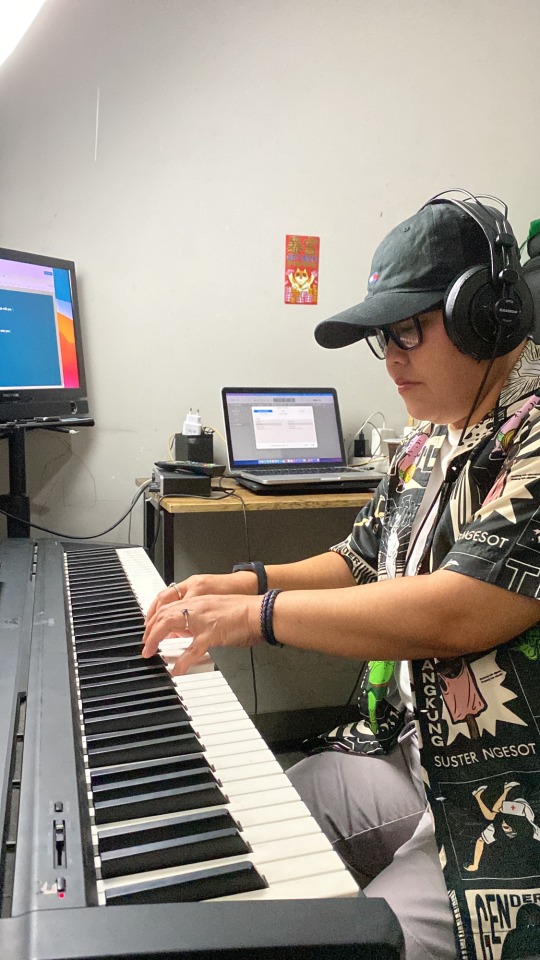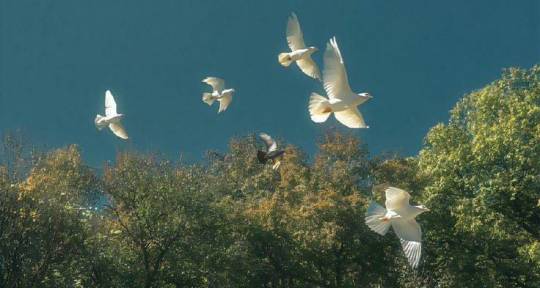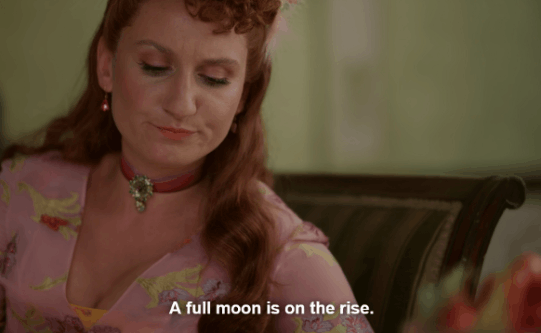#paduan
Explore tagged Tumblr posts
Text
youtube
Chillax for a minute or 5...
0 notes
Text









Icons atores brasileiros.
Curta ou reposte se salvar
#brazilian icons#atores brasileiros#atores#atores icons#men icons#globais icons#atores globais icons#caio paduan icon#leandro lima icon#chay suede icon#rafa vitti icon#nicolas prattes icon#cauã reymond icon#bruno gagliasso icon#romulo estrela icon#rainer cadete icon#icon boys#homens icons
15 notes
·
View notes
Text
Solusi rekaman vokal grup dan choir
Bagi anda yang mencari jasa rekam untuk vocal group atau choir, silahkan hubungi kami. tim kami akan membantu anda: Siapkan alat rekaman editing (pitch, rhythm sync) mixing dan mastering Selain itu kami juga menyediakan jasa pembuatan minus one silahkan hubungi kami 085881832305

View On WordPress
0 notes
Text
birthday haiku for my childhood bestie of veneto adoption: ready >:)
1 note
·
View note
Text
Paduan Pujian Surgawi bagi Anak Domba yang Layak" (Wahyu 5:11-12)
Sabtu, 4 Mei 2024 “Paduan Pujian Surgawi bagi Anak Domba yang Layak” (Wahyu 5:11-12) Wahyu 5:11-12 Maka aku melihat dan mendengar suara banyak malaikat sekeliling takhta, makhluk-makhluk dan tua-tua itu; jumlah mereka berlaksa-laksa dan beribu-ribu laksa, (12) katanya dengan suara nyaring: “Anak Domba yang disembelih itu layak untuk menerima kuasa, dan kekayaan, dan hikmat, dan kekuatan, dan…

View On WordPress
0 notes
Text
Mari Kita Berlebaran
Arr: Peter Andreas Timotius Singer: Alumni Paduan Suara Mahasiswa Institut Teknologi Sepuluh Nopember (PSM ITS)
Indahnya toleransi...
Menyanyikan lagu Lebaran yang diaransemen oleh seorang Pitch Perfect Non Muslim 14 Penyanyi, ada 2 orang bukan beragama Islam.
Sungguh bersyukur mempunyai komunitas yang multi etnis dan agama. Sehingga melatih rasa untuk selalu menghormati dan bergembira akan keberagaman.
Selamat Idul Fitri bagi seluruh pembaca. Mohon maaf atas segala khilaf kata, tulisan maupun perbuatan
Semoga kita kembali Murni.
Layaknya kemurnian cahaya dan energi semesta yang bersatu dengan kesejatian
Surabaya, 14 April 2024 ~ASw~
#sawiji#indonesia#its student choir#choir#accapela#music#paduan suara#selamat idul fitri#selamat hari raya#eid al fitr#eid mubarak#eid 2024#happy eid
0 notes
Text
TERWANGI!!! PARFUME LAUNDRY WA 0817-790-764

#parfume laundry toko parfume laundry terdekat clean parfume laundry harga parfum laundry aroma parfume laundry bibit parfum laundry toko par#deterjen ini tidak hanya membersihkan pakaian Anda#tetapi juga memberikan sentuhan kelas dan keharuman yang tahan lama. Setiap tetes parfum ini dirancang untuk menghadirkan sensasi kesegaran#Formulanya yang eksklusif merangkum paduan harum bunga-bungaan lembut#sentuhan buah segar#dan jejak kayu-kayuan yang menggoda. Penggunaan parfum laundry ini akan membuat pakaian Anda menjadi lebih dari sekadar bersih#melainkan menjadi karya seni aromatik yang siap memikat siapa pun yang menciumnya.#Dengan kelembutan yang memanjakan dan daya tahan aroma yang luar biasa#parfum laundry kami tidak hanya menetap pada pakaian saat dicuci#tetapi juga menyertai Anda sepanjang hari. Segera rasakan sentuhan mewah dan keteguhan aroma yang luar biasa#hanya dengan satu langkah mencuci menggunakan parfum laundry kami. Berikan pakaian Anda nuansa harum yang tak terlupakan dan nikmati pengal#tapi menjadi perjalanan ke dunia keharuman yang menghanyutkan.#LANGSUNG CHAT OWNER 0817-790-764#HASTAG ;#parfumelaundrytoko#parfumelaundryterdekat#cleanparfumelaundry#hargaparfumlaundry#aromaparfumelaundry#bibitparfumlaundry#tokoparfumlaundry#rekomendasiparfum#laundryparfum#aundryterdekat#parfumlaundrysakura#parfumlaundrytahanlamaparfume
0 notes
Text
Mari Makan Bersama (Adikarso) - Paduan Suara dan Angklung SGA Negeri Djakarta
0 notes
Text

Biasa terjatuh tak jarang membuat kita merasa begitu kecil. Bahkan, bukan sekali duakali menilai diri dari kurang dan kurangnya kita di masa lalu. Seringnya, memang kita menganggap diri begitu kerdil saat keterpurukan menghantui. Padahal kalau ditelusuri, ada banyak hal yang bisa kita syukuri, ada banyak kebaikan diri yang belum tentu orang lain miliki.
Sore itu, aku bersenandung tanpa tahu orang lain mendengar dan mengamati. "Kak, suaramu bagus ya ketika bernyanyi". Aku gelagapan, seraya menjawab, "Hehe, aku pernah ikut paduan suara ketika sekolah".
Dilain waktu, seorang teman pernah bertanya, "Kak, kok di foto ini ruangannya luas? Bukannya sempit ya?". Ku bilang, "Sepertinya pengambilan gambar ku saja yang membuat terlihat lebih luas". Ia kembali berkomentar, "Haha. Aku lupa kalau kakak yang foto hasilnya seperti foto profesional"
Dua hal yang bagiku biasa saja, tak istimewa. Dua hal sederhana yang jarang sekali aku apresiasi, justru diam-diam orang lain amati. Memang ya, terkadang kita butuh orang lain untuk menyadarkan bahwa ada banyak hal baik dalam diri. Bahwa kita tidak berdiri di masa lalu dan tak perlu terus menerus merendahkan diri sendiri. Karena tanpa kita sadari, kita terus bertumbuh --jadi lebih baik, atas izinNya.
Jadi, sudahkah kita mengapresiasi diri atas hal kecil dalam diri yang tak kita lihat hari ini?
Depok, 9 Mei 20.00
19 notes
·
View notes
Text
A Classical Polinalysis: Ep. 2
Hello friends, Polin stans, and classical music nerds!
Picking up from my episode 1 analysis, I am back with the second installment in the series of episode-by-episode analyses I mentioned when I shared the playlist I made of all the Classical pieces used in Bridgerton season 3.
The tracks on the playlist are all in order of when they appear in the show, and here are all the pieces that were used in episode 2:
Beethoven’s String Quartet No. 13 in B-Flat Major, Op. 130: VI. Finale. Allegro
Bach’s Violin Concerto No. 2 in E Major, BWV 1042: III. Allegro assai
Mozart’s String Quartet No. 8 in F Major, "Viennese", No. 1, K. 168: IV. Allegro
Mozart’s String Quartet No. 3 in G Major, "Milanese", No. 2, K. 156/134b: I. Presto
Mozart’s String Quartet No. 23 in F Major, "Prussian", No. 3, K. 590: IV. Allegro
Joseph Schuster’s String Quartet No. 2 in B-flat Major: I. Allegro di molto (formerly attributed to Mozart as the "Milanese" (or Paduan) String Quartet No. 2, K. 210)
Beethoven’s Piano Sonata No. 23 in F Minor, Op. 57, “Appassionata”: II. Andante con moto
All of this music is used over the course of the Full Moon ball, and the choice of music and the scenes each piece of music is paired with turns the ball something of a microcosm for the entire episode. What the hell do I mean by that?

This episode is all about flirtation, fertility, and passion, and the action in this episode sets into motion some of the major conflicts of the season. We have the Mondriches settling into their new home and attending society events for the first time, the Featherington sisters getting a healthy dose of Sex Ed, Francesca being granted the Queen’s favor, and—of course—Colin and Penelope beginning their lessons and all the tension and drama that brings. So let’s get into how the Classical soundtrack compliments this very meaty episode…
Looking at the track list in order, we’ve got a bit of a composer sandwich (get it? meaty episode? ha-ha-ha?) with Beethoven bread, Mozart filling, and Bach and Schuster toppings. The allegro finale of Beethoven’s String Quartet No. 13, which starts as Colin and Eloise’s conversation about Penelope in the carriage ends, welcomes us to the ball. The second movement of Beethoven’s “Appassionata,” which Francesca is playing when Lady Danbury sneakily invites the Queen to observe, concludes the whole event. But I have a lot to say about both Beethoven pieces, so I’m going to save that for later! To start, I want to talk about the flirtatiousness of the other pieces used during this episode. ��
The next piece after the Beethoven string quartet is the third movement from Bach’s Violin Concerto No. 2, which plays when Benedict asks Miss Stowell to dance. We only hear the very beginning of the concerto in this episode, but the distinguishing characteristic of a concerto—which is also what I find so flirtatious about this piece—is the back-and-forth between a solo instrument (in this case, a solo violin) and an ensemble (in this case, a chamber orchestra). In particular with shorter pieces like this Bach concerto, which is an energetic two minutes long with concise musical verses, you get the feeling of a lively conversation, where the ensemble has their say, the soloist replies, the ensemble adds another musing, then the soloist replies, and so on.
I also think this concerto is fun for this scene for a couple other reasons. One, the soloist-ensemble dynamic calls to mind Benedict getting cornered by a pack of ladies. But also, this concerto is in what’s called “ritornello” form, which means that the ensemble repeats the same musical theme every time they come back in, and I love this as a funny little musical illustration of Miss Stowell’s persistence with Benedict—she keeps coming back, over and over, just like that repetitive musical theme!
The next piece is the fourth movement from Mozart’s String Quartet No. 8, which starts playing right as Portia tells Mr. Finch that his wife is a pastry and continues as Penelope talks with Colin about his writing. This piece actually elides seamlessly into the track from the season 3 OST called “Attempts to Flirt” the moment Colin says he’ll consider letting Pen read more of his writing if she talks to at least one lord that night, which is a fun little tie-in to our theme. And the string quartet is great for this moment between Colin and Pen because of its fugal quality. A fugue—such as Bach’s famous Toccata and Fugue in D Minor, which is used in a ton of films including the original Fantasia—refers to a structure where the musical theme is introduced in different voices or instruments one after another. (Kind of similar to a musical round, like “Row, Row, Row Your Boat,” but not as simplistic.) Like the concerto, there’s a repetition of musical ideas, and those ideas bounce around from instrument to instrument, again creating a sense of lively conversation. Almost as if one person starts to tell a story to a group of friends, and then another person jumps in to say, “Oh, yes, I know what that’s like!” and tells their own anecdote, and so on around the group as the conversation feeds on everyone’s enthusiasm.
I love this for Pen and Colin’s interaction because it has a similarly flirtatious energy as the concerto, but at the same time it’s more complex than a simple back-and-forth. There’s a layering aspect to a fugue—when a subsequent instrument picks up the theme, that doesn’t mean the first instrument stops playing. I think this has a similar energy to the way good friends who are comfortable and excited together might end up talking over one another or picking up the ends of each other’s sentences. I think it’s also illustrative of the complexity of Colin and Penelope’s relationship, especially at this phase. They’re friends, yes, but other feelings are starting to get all mixed in. They flirt quite easily with each other, but that makes things more complicated. A playful but multi-layered fugue illustrates this pretty well, I think.
Then we have our second Mozart string quartet of the episode, the first movement of Mozart’s String Quartet No. 3, when Eloise inadvertently lets it slip to Cressida that Colin is helping Penelope find a husband. This piece isn’t a concerto or a fugue, but it does still have an interplay between the instruments that, to me, creates a similar effect. There are several moments within this movement where the violin will start the musical line and one of the other instruments will finish it, like passing a baton. Or, again, like lively and comfortable conversation! To me, it feels a little bit like two people winking at one another as they catch each other’s meaning.
There’s also a fun little bit about two-thirds of the way through the piece where, for not even 30 seconds, the tone of the music changes entirely, to something darker and more dramatic. Musically this part is known as the “development,” which is where the music meanders and does a bunch of interesting things before it returns to the main theme that was introduced in the beginning. This is a very common musical technique, but it doesn’t appear quite so starkly in any of the other pieces used in ep. 2. Since this piece plays during an Eloise and Cressida scene, we could take this darker interlude to be a reflection of Eloise’s relationship with Penelope—how it has taken a dramatic turn but will be righted again before long. We can also look at it through a Polin lens, since Penelope and Colin’s relationship takes a similar trajectory. Either way, I like the idea that there’s a bit of dark foreshadowing in this otherwise playful, flirtatious piece of music.
From there, we have the fourth movement of Mozart’s String Quartet No. 23, which plays as the Mondriches enter the scene. Other than the Beethoven pieces, this is the longest piece used during this episode, and it gets the most airtime. It plays for the entire duration of Benedict’s spiel about how married couples are free from the rules of society because they have already fulfilled their duty. And I love this piece for this moment because it really goes places. This movement has some fugal passages, giving it that same flirtatious quality as the other pieces used this episode, but there’s also moments where the tone gets much more dramatic, moments when the tempo seems to slow or get interrupted, syncopated sections that almost feel cartoonish… The character of the piece is surprising, and it evolves over time, and—I think—it reflects the journey the Mondriches have been on since season 1 and the surprising evolution their life has taken in season 3. And will continue to take! As they figure out how to navigate this new world and learn that it’s not as simple as Benedict made it seem.
Okay, now onto the last bit of sandwich filling, the first movement of Joseph Schuster’s String Quartet No. 2 in B-flat Major, which plays while Lady Danbury leads the Queen away from the main ball and while Eloise’s group of debutantes lament their chance to show off. Is this piece also flirtatious? Yes, I think this piece has a similar quality to Mozart’s String Quartet No. 3, where sometimes musical lines started by one instrument get picked up and finished by another. But another thing I find really interesting about this piece is that it’s a case of mistaken identity. This piece was composed around 1780, but until the 1960s music scholars attributed the piece to Mozart. And to use this piece during this scene is particularly compelling, because it’s the moment that Cressida denies having any good gossip, but also the moment when the gossip about Penelope and Colin begins to spread throughout the ball anyway, which Eloise (and Colin) mistakenly blames Cressida for. There’s also maybe a deeper meta here about mistaken identities that could tie into Cressida’s false claims to the Lady Whistledown name, which is interesting to consider in contrast to this moment at the ball where Cressida—unlike later in the season—chooses to be the bigger person and renounces the lure of gossip in favor of protecting her new friendship with Eloise.
Which brings us to the final piece of music featured at this ball, the second movement from Beethoven’s Piano Sonata No. 23, the “Appassionata.” Which is of course relevant because Francesca earlier admits to loving it so much during her abbreviated conversation with Lord Petri. Petri describes Francesca’s favorite pieces as “expressive music,” which is fitting for a musical work nicknamed “Passionate.” Francesca also says, “I mostly enjoy the chord progressions,” in response to Petri getting all “can’t you feel it in the music?” and although Petri was talking about the Ries Piano Trios, I like thinking about Francesca’s response in relation to the second movement of the “Appassionata” because that movement is one big theme-and-variation—there’s a musical theme introduced at the beginning, and then that theme is repeated two more times with variations in the melodic structure but always with the same chord progressions.
One thing I love about this piece as the close-out to the ball is the way, with each subsequent variation on the theme, the music builds and builds. It starts out slow and in a low register, and it gets faster and higher pitched as it goes (the part we hear Francesca playing is the fast high part). There’s a really obvious analogy to sex here, which is clear in Petri’s reaction and Francesca’s discomfort with his reaction—which is appropriate because sex is such a major motif in this episode (“Inserts himself? Inserts himself where?”). But there’s also the analogy to the build-up that we’re about to experience at the end of the episode, the way everything Penelope has been through the past couple episodes (couple seasons, really) culminates in that first unbelievably passionate kiss between her and Colin.
But, more than that! The second movement of the “Appassionata” doesn’t have a true ending—it’s through-composed with the third movement, so that the two are meant to be listened to back-to-back. If you listen to the end of the second movement by itself, you’ll hear a chord that sounds like it’s supposed to resolve to a nice clear ending, but then instead of resolving, that chord is followed by an intriguing, dissonant, kinda jazzy-sounding musical lick. If you didn’t proceed to the third movement right away, musically, you’d be left hanging. (And even once you’re into the third movement, it takes a while for the music to properly resolve.) And I love this! Why do I love this? A while back, I did an analysis of Polin’s theme (from the original score) and wrote a bunch of stuff about how their musical theme, the way we hear it in part 1 of the season, feels unresolved, suspending us in the tension of their uncertain relationship status. We only get proper musical resolution in their theme in part 2, after they’re engaged. So using the second movement from the “Appassionata,” with its false ending, at the conclusion of the Full Moon ball—a ball which encapsulates so much of what’s going on in the episode overall—is such a great way to foreshadow the end of the episode: the build-build-build to the passionate kiss and then—! Leave us hanging as Penelope runs away and Colin’s life starts falling apart around him.
Speaking of endings…! It’s time to circle back around to the first piece of bread in our Beethoven sandwich, the sixth movement from Beethoven’s String Quartet No. 13…
If you’ve stuck with me this far, hang in there for just bit longer! Maybe take a quick break and grab a snack. ;)
I thought a lot about the usage of the allegro finale from Beethoven’s Op. 130 in this episode. It’s such an interesting choice, not necessarily because of the music itself, but because of the history of the entire quartet. See, when Beethoven first composed String Quartet No. 13, it had a different final movement. However, at the first performance, that movement received such a negative reaction that Beethoven’s publisher convinced him to write a replacement. The replacement is what’s used in the show. And it has an entirely different character from the original. The new finale is light and cheery, while the original was dense and complicated. The original was panned by critics as being incomprehensible, inaccessible, and difficult to both listen to and play. (Give it a listen. You may find that it makes you deeply uncomfortable 😅 but it’s definitely an experience!) The new finale, on the other hand, is…a dance! It’s bouncy and positively Haydnesque, and completely uncontroversial.
The original was ultimately published as its own work under the title “Grosse Fugue,” as Beethoven’s Op. 133. However, some Beethoven enthusiasts and music scholars will argue that the correct way to play String Quartet No. 13 is with the original ending, the way Beethoven intended. Preferences vary, though, and what this means is…there are two possible, perfectly valid, endings to this piece of music. And each ending has a completely different vibe.
Do you see where I’m going with this? 😉
This piece plays as we are welcomed into the Full Moon ball, and when I set out to do this analysis, I was originally looking at the allegro finale on its own, trying to find something meaningful in its structure or its harmonies… But I think what’s most interesting about it, in the context of this episode, is that it represents the duality of choice. And there’s a few different layers this could apply to: Eloise and Cressida’s decision whether or not to share the gossip about Colin helping Penelope, Colin’s choice to help Penelope in the first place (and to continue to help her after the journal faux pas)...his choice—at the end of the episode—to kiss her. The Queen's choice of a diamond, even! But if we’re talking about possible endings, then this piece is really setting us up for the ultimate narrative choice between Colin and Lord Debling. And it’s fitting as an introduction to the Full Moon ball because it’s at this ball that Colin gets his first taste of jealousy and competition, and then of course it’s Penelope’s humiliation at this ball that is the catalyst for the kiss that sends Colin into his downward spiral of desperate, all-consuming love. So whereas at the end of ep. 1 Colin may have been able to go about his life acting as though he was unconcerned about whatever feelings he may or may not have had for Penelope at that point, by the end of ep. 2 that’s simply not at all possible anymore. And so the show starts building the foundations of one of Penelope’s possible choices, one of her potential endings. (And I guess whether or not you consider Debling to be a perfectly valid alternative ending depends on what kind of Polin shipper you are. 😉)
So there you have it: the drama of choice, the sexiness and frustration of building yet unresolved tension, misunderstandings (and, you might even say, the probable pains of friendship), SO much flirting—some easy and straightforward, some ceaseless and unvarying, some deliciously complex… All present at the ball, throughout the episode, and in the Classical soundtrack.
♥
And here's some of the research I did for this post:
Beethoven's String Quartet No. 13: https://www.earsense.org/chamber-music/Ludwig-van-Beethoven-String-Quartet-No-13-in-B-flat-major-Op-130/
Beethoven's String Quartet No. 13: https://www.brentanoquartet.com/notes/beethoven-quartet-opus-130/
Beethoven's String Quartet No. 13: https://www.maramarietta.com/the-arts/music/classical/beethoven/
Bach's Violin Concerto No. 2: https://www.laphil.com/musicdb/pieces/4549/violin-concerto-in-e-major-bwv-1042
Mozart's String Quartet No. 8: https://fugueforthought.de/2018/07/01/mozart-string-quartet-no-8-in-f-k-168/
Mozart's String Quartet No. 3: https://fugueforthought.de/2016/08/27/w-a-mozart-string-quartet-no-3-in-g-k-156/
Mozart's String Quartet No. 23: https://www.talkclassical.com/threads/mozart-string-quartet-23-k590-sq-review.81909/
Schuster's String Quartet No. 2: https://www.earsense.org/chamber-music/Joseph-Schuster-String-Quartet-in-B-flat-major-No-2-KAnh-C2001-K-Anh-210/
Beethoven's "Appassionata": https://www.youtube.com/watch?v=tR706pYvNl0&
#bridgerton#polin#bridgerton season 3#penelope featherington#colin bridgerton#bridgerton analysis#meta#polin songs
14 notes
·
View notes
Text

MWW Artwork of the Day (4/18/25) Andrea Mantegna (Paduan, 1421-1506) Pala of St. Zeno: Calvary (1459) Oil on wood, 76 x 96 cm. Musée du Louvre, Paris
The Passion narrative, which relates the events of Christ's last week on earth, was a constant focus in Italian painting. Formidable traditions governed the representation of the Crucifixion and other Passion scenes, and yet Italian painters continually renewed them through creative engagement with established conventions. Unlike the stories associated with Christ's birth, the episodes of the Passion are colored by painful emotions, such as guilt, intense pity, and grief, and artists often worked to make the viewer share these feelings.
3 notes
·
View notes
Text
"Bacalah (wahai Muhammad) dengan nama Tuhanmu yang menciptakan (sekalian makhluk)," (Al-'Alaq : 1)
Iqra! Iqra! Iqra! ; kitab-Mu menjadi paduan. Al-Quran itu cahaya bagi jiwa yang kegelapan, ketenangan bagi jiwa yang keresahan, jawapan bagi jiwa yang dipenuhi persoalan.
Salam Nuzul Quran.
3 notes
·
View notes
Text
Mixing dan mastering choir
Mixing female choir SSAA Sopran 1 Sopran 2 Alto 1 Alto 2 Klien: SMA Tarakanita 1 Live Recording, 8 Tracks 085881832305 WhatsApp

View On WordPress
1 note
·
View note
Text



Shinecon 6.0 VR Box Virtual Reality Glasses dengan Headphone
https://tokopedia.link/B44LuyxtPEb - https://shope.ee/2fkcS86SLk
====================================================
Spesifikasi: Material: ABS Plastik Dimensi: 21 x 18 x 9 cm Kompatibilitas Smartphone: 4.7 - 6.53" Bidang Pandang: 90-100 derajat
Informasi Saatnya menikmati sensasi 3D Virtual Reality (VR) lewat smartphone menggunakan VR box dari Shinecon. Terbuat dari material ABS berkualitas yang awet dan tahan lama, serta dilengkapi tali elastis yang mudah dikaitkan di kepala Anda dengan nyaman dan mudah. Nikmati sensasi 3D VR di rumah dan di mana saja dengan VR box dari Shinecon.
Fitur Cara Kerja Anda dapat menikmati 3D Virtual Reality dengan gampang, cukup mendownload aplikasi cardboard disini dan masukkan smartphone kedalam VR Box, rasakan sensasinya.
Bidang Pandang Lebih Luas VR Box ini memiliki lensa berbentuk bulat yang memberi ruang pengelihatan lebih luas. Posisi Lensa juga memungkinkan untuk diubah sesuai dengan posisi mata Anda dan ukuran smartphone.
Headphone Nikmati sensasi dunia virtual yang lebih nyata dengan paduan headphone yang langsung terhubung dengan virtual reality box Anda. dengan suara yang dihasilkan suasana menonton dengan virtual reality Anda menjadi lebih nyata. Anda bisa menghubungkan smartphone dengan jack 3.5mm male yang tersedia di tempat menaruh smartphone pada VR Box ini.
Desain Ergonomis VR Box ini memiliki tingkat kenyaman yang luar biasa. Dengan desain headband baru membuat VR ini sangat nyaman dan tidak membuat kepala Anda terasa berat terutama dalam jangka waktu lama.
Kesesuaian Dapat digunakan untuk semua jenis smartphone dengan ukuran 4.7 inch sampai 6.53 inch.
Dukungan Kacamata Untuk Anda pengguna kaca mata tetap dapat menggunakan VR Box dengan nyaman karena tidak perlu repot melepas kaca mata dan pengelihatan Anda tetap jelas.
Isi Kemasan 1 x Shinecon 6.0 VR Box Virtual Reality Glasses dengan Headphone 1 x Kain Pembersih 1 x Panduan Penggunaan ==================================================== https://shope.ee/A9lt8Dkz3M https://tokopedia.link/vfg3UqLVZzb
#kantong belanja#shopee#tas belanja#toko online#tokopedia#keranjang belanja#anggaran belanja#ecommerce#shoppers#shopping#belanja online#online shopping#online store#shinecon#Virtual Reality Glasses#Headphone
26 notes
·
View notes
Note
Idk how Italians feel (I know no country is a monolith) but when I’ve told ppl from Italy (exchange students etc) before that my ancestors came over from Sicily I was told— VERY pointedly that Sicily is not part of “real Italy”
so… thoughts?
first of all my parents are immigrants, but i was born in Italy so you get the whole 100% Italian experience (and some thinly veiled racism in elementary school). So. On a cultural level italy is a fucking circus. If I were to ask a venetian (reminder, 38km away from me) if they want to travel in the historic centre of their city they will look at you dead in the eye unless you are venetian yourself and you know the non-tourist ingested streets. If you come to oadia and ask me I'm going to look at you in the eyes and start to list all the fun places I know (and shit on the Pedrocchi cafe because I can, its overpriced). If you ask a Paduan they are going to ignore you.
I know some people from Sicily that worked with my mom and the cultural shock on both ends is incredible. In the north there is a stricter work culture, in the south work hours are seen more like a liquid (oh yeah, you have to go out an hour earlier every Sunday? No problem, you can recover it another day). They are extremely chill, but I never tought they weren't Italian. The people you met MAY be talking about sickly on a geographical level since when pangea was a thing it was connected to Africa and not Italy. But at the same time there are many italians in Switzerland, at the border with France, in Austria and even A LOT of Italians in Argentina. My consideration of Italian is "do you feel like you are home, loved, enjoy the cumminty and most importantly EAT GOOD? Then yeah, as long as its Italian territory and closer parts you can be considered Italian: )
2 notes
·
View notes
Text
Biidznillah...
Sebuah perkataan yang menunjukan kepasrahan. Jika semua pencapaian tentu saja atas izin Allah. Sering kita terjebak dalam ke-aku-an, bahwa semua yang telah kita dapatkan adalah berkat dari usaha yang telah kita lakukan. Tak sepenuhnya salah kurasa. Tapi bagi orang beriman tak sebatas itu. Usaha dan doa menjadi paduan yang berkelindan sempurna. Sering kudengar istilah. Usaha tanpa doa adalah sombong, sedangkan doa tanpa usaha adalah bohong. Tepat sekali rasanya.
Mengesampingkan campur tangan Allah atas segala pencapaian mengartikan kesombongan yang besar pada diri. Begitu angkuh diri merasa berkuasa atas apapun yang terjadi. Padahal mudah saja segala usaha menjadi tak bernilai jika takdir berkata demikian. Dalam hal lain,ada juga tidak mau berusaha hanya berdoa untuk mendapatkan sesuatu. Apakah itu terlalu beriman. Begitu percaya diri menyerahkan sehalanya pada Allah. Tentu saja bukan. Itu bukanlah beriman.
Orang beriman menggunakan dua kayuh yang bernama usaha dan doa. Bagaikan kayuh sepeda yang semakin dikayuh semakin maju mendekatkan diri pada tujuan. Biidznillah. Kalimat yang bermakna begitu dalam. Tentang penghambaan, tentang kepasrahan, tentang percaya dan tentang usaha yang maksimal.
2 notes
·
View notes